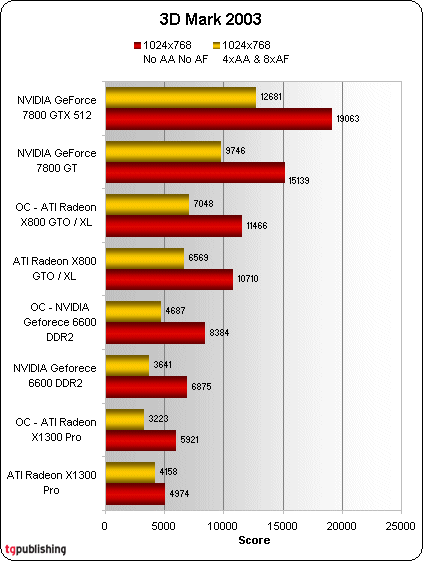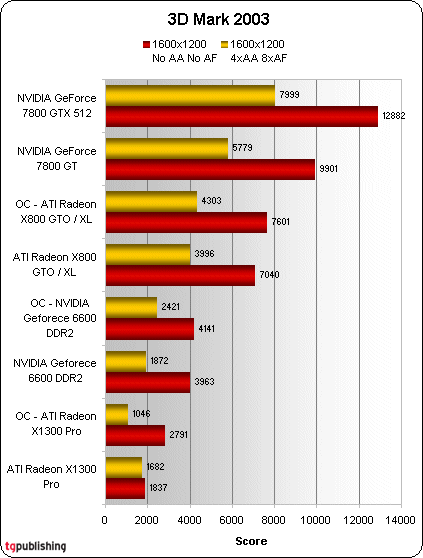Squeezing Value Out of Lower-End Cards
3D Mark 2003
3DMark is called the "Gamer's Benchmark," and THG has been using its different versions for years. The mark is set using a reference system; the higher the score, the better the performance of the system versus the reference one. With each new version of 3DMark, scores are scaled down so they do not become astronomically high. These third-party benchmarks are widely used across the industry.
The price points of these cards were directly commensurate with their performance. The $185 ATI R430 based card is in the lead, while the $120 NVIDIA 6600 GeForce is in second place. Trailing behind is the $105 ATI Radeon X1300 Pro.
By overclocking both the ATI cards, we were able to boost performance as measured by 3DMark 2003 by 700 marks at a resolution of 1024 x 768. The NVIDIA GeForce 6600 with its great ability to overclock gained 1,500 marks under the same test. At the 1600 x 1200 resolution level, the NVIDIA GeForce 6600's performance increase from overclocking diminishes to a gain of less than 200 marks. Conversely, the ATI cards both keep their pace with the GTO / XL gains 600 marks and the Radeon X1300 Pro gains 900 marks from overclocking.
Something interesting happened in the 1600x1200 scores with the X1300 Pro based card. With the slight overclock with 4xAA and 8xAF turned on, the score was actually worse by a great deal than the stock speed card. As you will see in Half-Life 2, the 6600 had a similar issue.
Get Tom's Hardware's best news and in-depth reviews, straight to your inbox.


